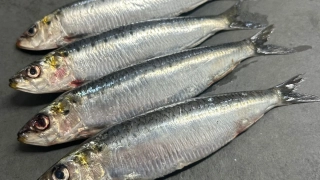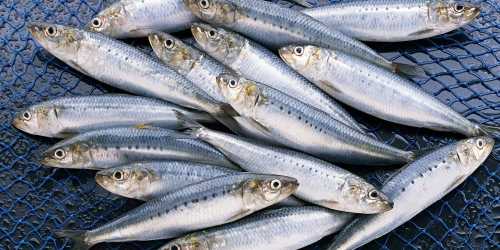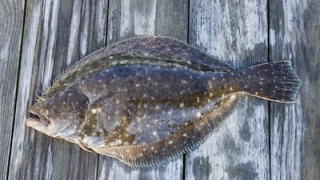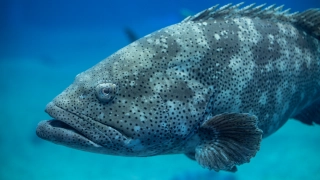Sardine: Taste Profile, Aroma, Benefits and Health Risks
Sardine (commonly Sardina pilchardus in Europe and related species worldwide) is a small, oily fish long associated with Mediterranean, Asian, and global cuisines. Often sold canned, grilled, or smoked, sardines are celebrated both as a nutritious staple and a flavorful delicacy. Their strong taste has made them polarizing—beloved by some, avoided by others.
Sardines are generally safe for consumption but should be avoided by individuals with fish allergies. Mercury levels are very low compared to large predatory fish, making them safe even for pregnant women and children when consumed in moderation. However, their high purine content may be problematic for individuals with gout.
What does Sardine taste like?

Complete Sensory Description
-
Taste: Rich, bold, and distinctly oily with a salty-sweet balance; stronger than white fish like cod or snapper.
-
Aroma: Pronounced, marine-forward, often intensified in canned or preserved forms.
-
Texture: Soft, tender, and oily; bones are edible when canned, adding a subtle crunch.
-
Appearance: Silver-skinned, small fish with dark, rich flesh when cooked or canned.
In-depth Flavor Analysis
Sardines derive their intense taste from high lipid content, particularly omega-3 fatty acids (EPA and DHA). These fats oxidize easily, creating strong marine notes that intensify if not extremely fresh. Free amino acids such as histidine and taurine contribute to umami depth, while natural salts enhance their savory-salty edge. Preservation methods influence flavor dramatically: fresh sardines taste cleaner and sweeter, while canned or smoked sardines develop earthy, briny, and sometimes metallic undertones.
Varieties and Culinary Applications
-
European sardine (Sardina pilchardus): Common in Mediterranean cuisine.
-
Pacific sardine (Sardinops sagax): Popular in the U.S. and Australia.
-
Japanese iwashi: Small sardine varieties, often grilled or stewed.
Culinary uses:
-
Fresh sardines grilled whole with olive oil and lemon.
-
Canned sardines eaten directly or added to salads, sandwiches, and pasta.
-
Smoked sardines used in spreads or appetizers.
-
Pickled sardines as part of traditional European recipes.
Selection and Storage
-
Fresh sardines should be shiny, firm, and smell like the sea, not overly fishy.
-
Best consumed within 24 hours of purchase due to rapid spoilage.
-
Canned sardines are shelf-stable and retain nutrition for months or years.
Nutritional Insights
Sardines are nutritional powerhouses:
-
Extremely high in omega-3 fatty acids, beneficial for heart and brain health.
-
Rich in vitamin D, calcium (from edible bones), selenium, and B12.
-
Support bone health, immune function, and energy metabolism.
Regular consumption may help reduce the risk of heart disease and osteoporosis.

Expert Insights & Culinary Tips
Chefs recommend serving sardines simply: grilled or canned with bread, olive oil, and lemon. Their bold taste pairs well with acidic or bitter components—such as tomatoes, vinegar, or leafy greens—that balance their richness. For beginners, canned sardines in olive oil are the easiest introduction.
Interesting and Curious Facts
-
The name “sardine” comes from Sardinia, where they were once abundant.
-
In the 19th and 20th centuries, sardine canning was a major industry, shaping entire coastal economies.
-
Pablo Picasso reportedly enjoyed sardines and often featured them in his still-life paintings.
Harm and Dietary Considerations
-
High purine content may trigger gout attacks in susceptible individuals.
-
Overconsumption can lead to excessive sodium intake, especially from canned sardines.
-
Some people find the strong taste overwhelming, which may limit popularity.
Religious Dietary Considerations
Sardines are acceptable in Islamic (halal) and Jewish (kosher, if scaled) dietary laws. They are also widely consumed in Mediterranean Christian traditions, particularly during fasting periods.
Sustainability & Fishing Practices
-
Sardines are considered one of the most sustainable fish choices due to their fast reproduction and abundance.
-
Populations fluctuate naturally in cycles, leading to periodic declines, but generally recover quickly.
-
Many sardine fisheries are certified by the Marine Stewardship Council (MSC).
-
Canning preserves sardines efficiently, reducing food waste and making them widely accessible.
Final Thoughts & Sensory Journey
Sardines offer an intense yet rewarding sensory journey: bold, oily richness paired with unmatched nutrition. They are a sustainable seafood choice, embodying both tradition and practicality. For some, their strong character is an acquired taste—but one that delivers immense culinary and health benefits.
Resources
-
FAO Fisheries and Aquaculture Reports: Global Sardine Stocks.
-
Tocher, D. R. (2010). Fatty acid composition in fish and effects on nutrition. Journal of Applied Ichthyology.
-
NOAA Fisheries: Pacific Sardine Management.
-
European Commission: Sardine Sustainability Assessments.











